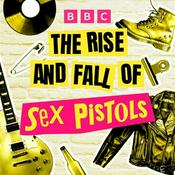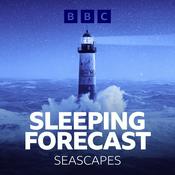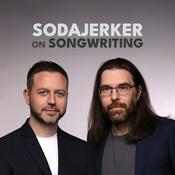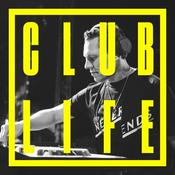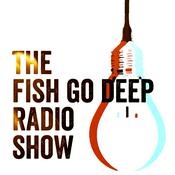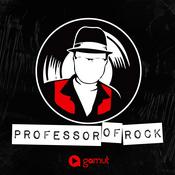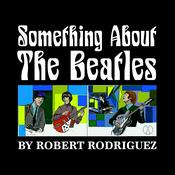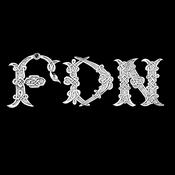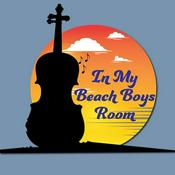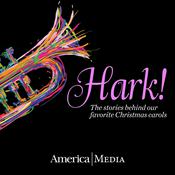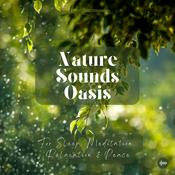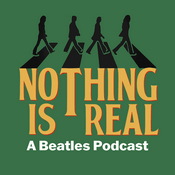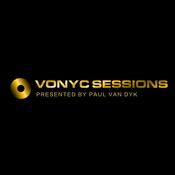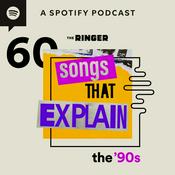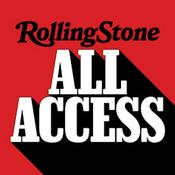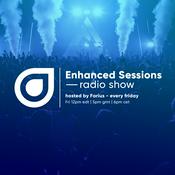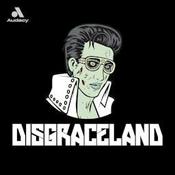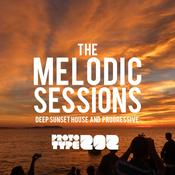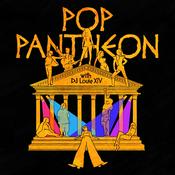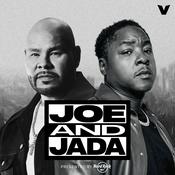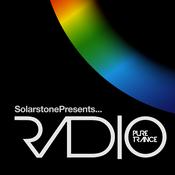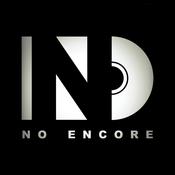438 episodes
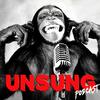
IN SESSION: Anthony Sahyoun from SANAM
24/11/2025 | 1h 24 mins.
This week, we're joined by Anthony Sahyoun, member of the Lebanese experimental band SANAM, for a conversation that extends far beyond music. Recorded just before the band's autumn European tour, we explore their unique sound—a compelling blend of Arabic traditional forms, post-rock, noise, and electronic elements that defies easy categorisation. SANAM's origins trace back to an improvisational festival in Beirut, where musicians from different scenes were brought together to play with Faust's Hans Joachim Irmler. What started as a three-day residency evolved into something far more substantial, resulting in two critically acclaimed albums that seamlessly weave microtonal Arabic melodies with contemporary Western experimental music. We discuss the realities of being a touring band from Lebanon, where you can't simply jump in a van and drive to neighbouring territories. Anthony candidly shares what it's like to perform abroad whilst your homeland faces ongoing conflict, from the 2020 Beirut port explosion to the recent pager attacks. Including what the difference is between being home during crises versus worrying from afar. We also delve into Beirut's vibrant but precarious cultural scene, touching on everything from the city's techno resurgence to the tragic story of Mashrou' Leila and the harassment that led to their disbandment. Anthony offers thoughtful perspectives on LGBTQ+ issues in Lebanon, explaining how religiosity became weaponised during the civil war and how political thugs use marginalised communities as pawns in power struggles. And well, as long terms fans know, we inevitably chat about streaming and the ethics of it. Which is something we've spoken a lot about lately (and will probably speak more about in future too...). Anthony doesn't hold back, expressing a preference for people to steal music rather than stream it—a radical but consistent stance given the military-industrial complex's connections to major tech platforms. It's refreshing to hear an artist speak so frankly about these contradictions. Anthony is engaging, thoughtful, and occasionally righteously angry throughout this interview, and we had a great time chatting to him. We thoroughly recommend you check out the band's music on Bandcamp and on catch a show in Italy or the UK this November and December: 24.11 / Roma / IT / Monk 26.11 / Savona / IT / Raindogs 27.11 / Marseille / FR / Jest Festival 28.11 / Trieste / IT / youTheater 30.11 / Leeds / UK / The Attic 01.12 / Glasgow / UK / The Flying Duck 02.12 / Salford / UK / The White Hotel 03.12 / Bristol / UK / Strange Brew 04.12 / Brighton / UK / Patterns 05.12 / London / UK / Rich Mix Highlights: 00:00 Introduction 00:24 Anthony Sahyoun's Background and Band Introduction 01:31 First Meeting and Early Performances 03:10 Formation and Evolution of the Band 07:06 Musical Style and Influences 11:07 Recording the First Album 12:45 Cultural and Musical Context 32:42 Recording the Second Album 37:28 Touring Challenges and Experiences 41:19 Life in Lebanon and Touring Challenges 42:19 Impact of Global Events on Performances 45:49 Choosing the Right Label 48:02 Lebanese Music Scene and Cultural Representation 51:40 Food and Comfort on Tour 54:47 Beirut's Music and Nightlife 01:05:16 LGBTQ+ Issues and Political Climate 01:13:50 Streaming Platforms and Ethical Dilemmas 01:22:51 Concluding Thoughts and Upcoming Shows Hosted by Simplecast, an AdsWizz company. See pcm.adswizz.com for information about our collection and use of personal data for advertising.

The Life and Times of Charles Bradley - 377
03/11/2025 | 58 mins.
Charles Bradley’s cover of Black Sabbath’s Changes is one that both hosts of this podcast believe could well be the definitive version of the song. And we say that having done three episodes on Black Sabbath — an odyssey that gave us both a newfound appreciation for one of, if not the, most important metal bands to have ever existed. Changes itself is a great song, but this emotional reworking casts an entirely new light on its meaning and power. That, in turn, led us to dive into the work — and world — of Charles Bradley. Much was (rightly) made of Bradley when the then 62-year-old “Screaming Eagle of Soul” burst into public consciousness in 2011 with his debut album No Time for Dreaming. He was met with widespread critical acclaim, and the record proved a major success for his label, Daptone Records. From there, he went from strength to strength, releasing two more albums before his untimely death in 2016 from stomach cancer. A former James Brown impersonator, Bradley’s life was one of tremendous hardship, which ultimately saw him achieve his greatest dream. He burned brightly and briefly, and his final record, Changes — named after the excellent Sabbath cover nestled within — is a remarkable work to bow out with. In this episode, we talk all about his life, through the lens of the 2011 documentary Charles Bradley: Soul of America, before discussing some of our favourite soul covers of rock songs. If you enjoyed this episode, do take some time to check out our Patreon, where you can get early access to episode (with no ads), bonus content and much more. Hosted by Simplecast, an AdsWizz company. See pcm.adswizz.com for information about our collection and use of personal data for advertising.

The Dark Side of David Bowie and 1970s Groupie Culture - 376
13/10/2025 | 1h 19 mins.
Bowie fans have long found ways to make peace with some of the more unsavoury aspects of his character and behaviour during that decade. His Thin White Duke persona highlights what, by his own admission, were “the darkest days” of his life. And while he was quick to distance himself from that character as he grew older, its influence on certain members of the British far right certainly left a mark. Yet there is a much darker period of his life than this. It is now a matter of record that he was in sexual relationships with both Lori Maddox and Sable Starr — perhaps the two most infamous “baby groupies” of the early ’70s — when they were just 13 and 15 years old, respectively. Grim stuff all round. We’ll be exploring both of these aspects of his life in this week’s episode, as well as the wider “baby groupie” culture of the era. This episode raises questions about separating the art from the artist, the role of 1970s rock culture, and the personal responsibility of fans. Join us as we navigate the challenging waters of moral grandstanding and personal hypocrisy, questioning if, and how, we can reconcile admiration for Bowie’s art with the transgressions of the man himself. Highlights 00:00 Introduction 00:38 Unfinished Business with David Bowie 02:26 Trigger Warnings 04:05 David Bowie's Complex Legacy 13:57 Fascism and Controversial Statements 38:50 Sexual Misdeeds and Allegations 41:05 Introduction to Statutory Rape in Rock Culture 41:30 The Story of Dana Gillespie and David Bowie 42:34 Lori Maddox and the Baby Groupies 43:29 Sable Starr and the Rock Scene 45:05 The Culture of Underage Groupies 47:24 Laurie Maddox's Relationship with David Bowie 56:51 Jimmy Page and Laurie Maddox 01:00:06 The Wider Problem in Rock Culture 01:07:45 Modern Reflections on Past Actions 01:14:58 Conclusion and Final Thoughts Hosted by Simplecast, an AdsWizz company. See pcm.adswizz.com for information about our collection and use of personal data for advertising.

Is The Warrior by Scandal a True Unsung Classic? - 375
29/9/2025 | 57 mins.
We're back after a fairly shambolic three weeks in our lives (redundancy sure does suck) with this slice of fried gold from the 1980s. You've almost certainly heard the lead single from this record. In fact, the question as to who the singer is of the song "The Warrior" has quite likely come up on a pub quiz at some point, and you've quite likely got the answer wrong. The answer is not, as you may think, Pat Benetar. It's Patty Smyth. The single this album is named after was an 80s hit, and penned by the legendary Holly Knight. We won't go into a huge amount of detail on her here, but suffice to say we think she's criminally underrated given some of the ginormous tunes she penned in the 80s. Indeed, we cover that in extensive detail in our episode on her short-lived band Device. Scandal imploded soon after this record was released, and members of the band, Patty included, went on to have varying degrees of success in the late 80s and early 90s. Patty Smyth's story itself is a fascinating one, so fascinating in fact that we actually forgot to talk all about her marriage to Television's Richard Hell. That one glaring omission aside, we do a pretty deep dive into Scandal and her career afterwards. HIGHLIGHTS: 00:00 Introduction and Pub Quiz Banter 00:35 Scandal and Patty Smyth: The Early Days 01:22 The Warrior and MTV Success 03:29 Classic Bands and Radio Challenges 05:03 Band Dynamics and Touring 07:24 Patty Smyth's Solo Career and Label Issues 18:31 Declining Van Halen and Family Priorities 21:19 Reunions and Later Years 27:12 Unreleased Tracks and MTV Hits 27:25 Goodbye to You and Other Hits 28:46 Fun Facts and Jimmy Fallon Appearance 29:39 Brian Adams Cover and Other Tracks 31:53 Christmas Album and Charity Work 33:22 The Warrior Album Review 34:44 Songwriting and Collaborations 38:40 The Warrior Music Video 43:12 Journey Song and Album Critique 45:10 Legacy and Final Thoughts Hosted by Simplecast, an AdsWizz company. See pcm.adswizz.com for information about our collection and use of personal data for advertising.

The Spotify Techsodus - Should Artists Really Be Leaving the World's Biggest Streaming Platform? - 374
08/9/2025 | 1h 11 mins.
This week we're diving into why bands like Godspeed You! Black Emperor and King Gizzard are pulling their music from Spotify - and why it probably won't change anything. It's a trickier situation than it seems, but the whole mess starts with Napster in 1999. 80 million people sharing MP3s illegally crashed the music industry, dropping revenue 15% in four years and creating a chain reaction that led to piracy running rampant for much of the 00s. Enter Daniel Ek in 2006 with Spotify, which was built initially using pirated music from The Pirate Bay, telling you everything about how much they value artists. But it worked. By offering free access to entire music catalogues (with ads), Spotify created something no competitor can match without hemorrhaging money. Today, 412 million people use Spotify's free tier. That's the foundation of their dominance - not the 263 million paying subscribers. But this creates an impossible situation for artists. Big names with established fanbases can afford to leave, but new artists risk invisibility. Record labels and promoters judge bands by Spotify monthly listeners and post-gig discovery relies on easy music access, meaning that pulling your music from this platform could be potentially damaging for their careers. The "just use Bandcamp" argument misses the point - it's a different business model entirely. Bandcamp is buying a car; Spotify is hiring any car you want. And as it turns out, a LOT of people prefer hiring now. But the real problem isn't Spotify - it's "technofeudalism." Tech platforms operate like medieval fiefdoms where users become trapped serfs. Artists complain about Spotify royalties while creating free content for Instagram and TikTok, which monetise their labour through surveillance capitalism. The arms investment angle (Daniel Ek's €600m in AI weapons) sounds damning until you realise Google runs military AI projects for Israel, Meta builds battlefield AR for the US military, and all big tech props up the military-industrial complex. Their conclusion is bleak: there's no way out. The market expects free music and won't change. Mass boycotts might work but won't happen. The only real solution is direct artist support - gigs, merch, Bandcamp purchases, because it's almost impossible for anyone to truly extricate themselves from terrible machinery of the current internet era. Highlights: 00:00 Introduction: Bands Leaving Spotify 00:15 The Techsodus Idea and Streaming Services 02:23 History of Music Piracy: From Napster to Spotify 07:01 Spotify's Rise and Artist Payments 16:15 Technofeudalism and the Creator Economy 28:34 Spotify's Business Model and Market Dominance 34:58 The Spotify Dilemma: Free Access and Market Expectations 35:15 Apple's Potential and the iTunes Model Revival 35:53 Bandcamp: A Hopeful Alternative? 39:17 The Discoverability Advantage of Streaming Platforms 47:15 The Moral and Practical Dilemma for Artists 59:52 The Broader Issue: Platform Capitalism and Tech Giants 01:15:00 Supporting Artists Directly is The Only Real Solution Hosted by Simplecast, an AdsWizz company. See pcm.adswizz.com for information about our collection and use of personal data for advertising.
More Music podcasts
Trending Music podcasts
About Unsung Podcast
Listen to Unsung Podcast, Soul Music and many other podcasts from around the world with the radio.net app

Get the free radio.net app
- Stations and podcasts to bookmark
- Stream via Wi-Fi or Bluetooth
- Supports Carplay & Android Auto
- Many other app features
Get the free radio.net app
- Stations and podcasts to bookmark
- Stream via Wi-Fi or Bluetooth
- Supports Carplay & Android Auto
- Many other app features


Unsung Podcast
download the app,
start listening.


